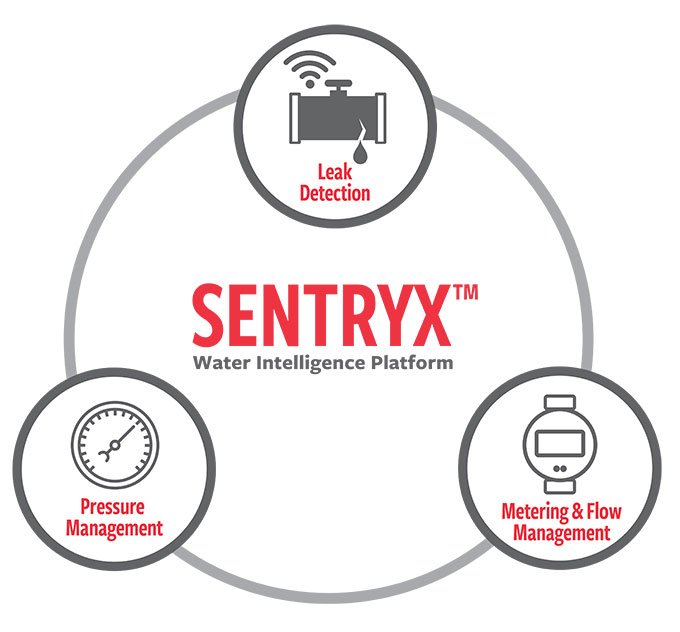Addressing Today's Water Challenges with Today's Solutions
Date:
Publication:
In the immediate years ahead, the water sector faces a host of significant challenges. Climate change — and with it, extreme weather events, increasing water scarcity, and unpredictable water availability — are placing unprecedented demand on the reliability of water supply systems. With much of the nation’s water pipelines and supporting equipment aging, investments and sustainable solutions are urgently needed to ensure our infrastructure remains strong and efficient well into the future.
At the same time, the water industry is approaching a major transformation with its workforce as many aging water professionals are set to retire in the next 5 to 10 years. To stay competitive and fill these soon-to-be-open roles, water utilities and companies alike will need to find new ways to recruit an entirely new generation of workers, mainly composed of Millennials and Generation Z.
Critical Strategies for Protecting Water Systems
Water distribution networks are becoming increasingly vulnerable in the broader context of a changing climate, making the responsibility to deliver clean and safe drinking water to communities more important than ever. For many water utilities, this means having access to products and solutions that limit water loss, extend the life of equipment, and detect leaks sooner. It also means that when repairs need to happen, they can be completed quickly while minimizing above-ground impacts, as well as reducing costs, water downtime, and project timelines.
One of the clearest examples of maintaining the integrity of water supply networks and minimizing non-revenue water is through water loss solutions. Municipalities can deploy intelligent technologies that not only detect leaks but can also characterize problems and help to prioritize the action they should take. As an example, acoustic detection and monitoring technologies can pinpoint where leaks occur and deliver actionable insights to optimize their repair.
Pressure management of water network can help extend the life of assets by managing flow at the lowest allowable minimal pressure. By precisely controlling critical point pressure via pressure-reducing valves, utilities can decrease real water losses and interruptions to supply by reducing leakage and bursts.
Digital transformation is changing the way the world works, and that could not be truer for the water industry. Sensors and IoT technologies capture large amounts of data from water systems, and by using intuitive software and analytics operators can now have real-time insights that allow them to make the most informed decisions. Like many companies, Mueller is accelerating its investments in smart water technologies to enable customers to make critical operational decisions and prioritize spending — ensuring that capital is allocated to the right assets that need it the most.
For instance, the Sentryx™ water intelligence platform provides water utilities with unique insights into the health of their distribution systems, leveraging near real-time data and analytics for better visibility into key parameters including pressure, flow, leaks, and temperature. Additionally, as a water industry leader in the use of artificial intelligence and machine learning, Mueller is constantly making efficiency gains and developing opportunities to achieve sustainable outcomes for water utilities.
Another example of technology when it comes to pipe installation and repair is the HYMAX ® Asset Installer mobile application. This is a simple yet powerful asset management solution for cataloging, tracking, and proactively managing HYMAX assets with the use of QR codes. Field crew has one-click support with onsite technical product resources with specifications and installation instructions. By establishing this baseline of pipe installation and repair, utilities can better prioritize and fund necessary investments to reduce long-term costs and risks.
For the future, Mueller is developing the capacity to import data from multiple sensor points to detect anomalies and use predictive analytics to help utilities proactively manage aging infrastructure, reduce water loss, and increase the safety of drinking water.

Digital Adoption for a New Workforce
With a large segment of legacy employees preparing to retire, the water sector’s transition to digital tools and smart technologies can play a very meaningful part in shaping a career in the water industry as a more appealing option among the emerging and younger demographic of professionals entering the workforce.
Compared to the people they will replace, Millennials and Gen Z have grown up using digital technologies, and the way they work, collaborate, solve problems, and communicate depends on these capabilities. The availability of digital solutions in a professional role is a high priority for them.
But this new generation is also defined by their sense of purpose. Many are entrepreneurial and creative-minded, and they want their ideas to be heard. Importantly, they are very motivated to work for companies that are both socially and environmentally responsible. This is where water organizations have a big advantage. As an industry that is dedicated to solving problems and ensuring that people have access to clean, high-quality water, the value proposition of a career in the water sector means these technology-minded professionals can have an opportunity to help make a positive impact for generations to come.
Click here to read the article in Modern Pumping Today.